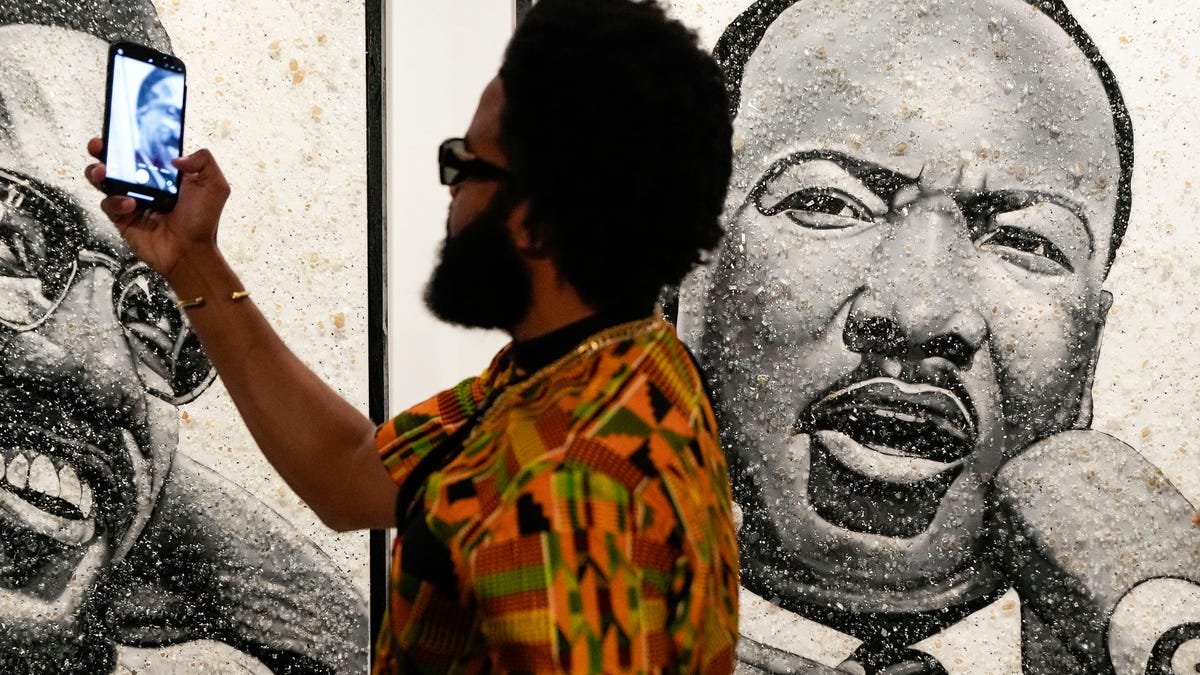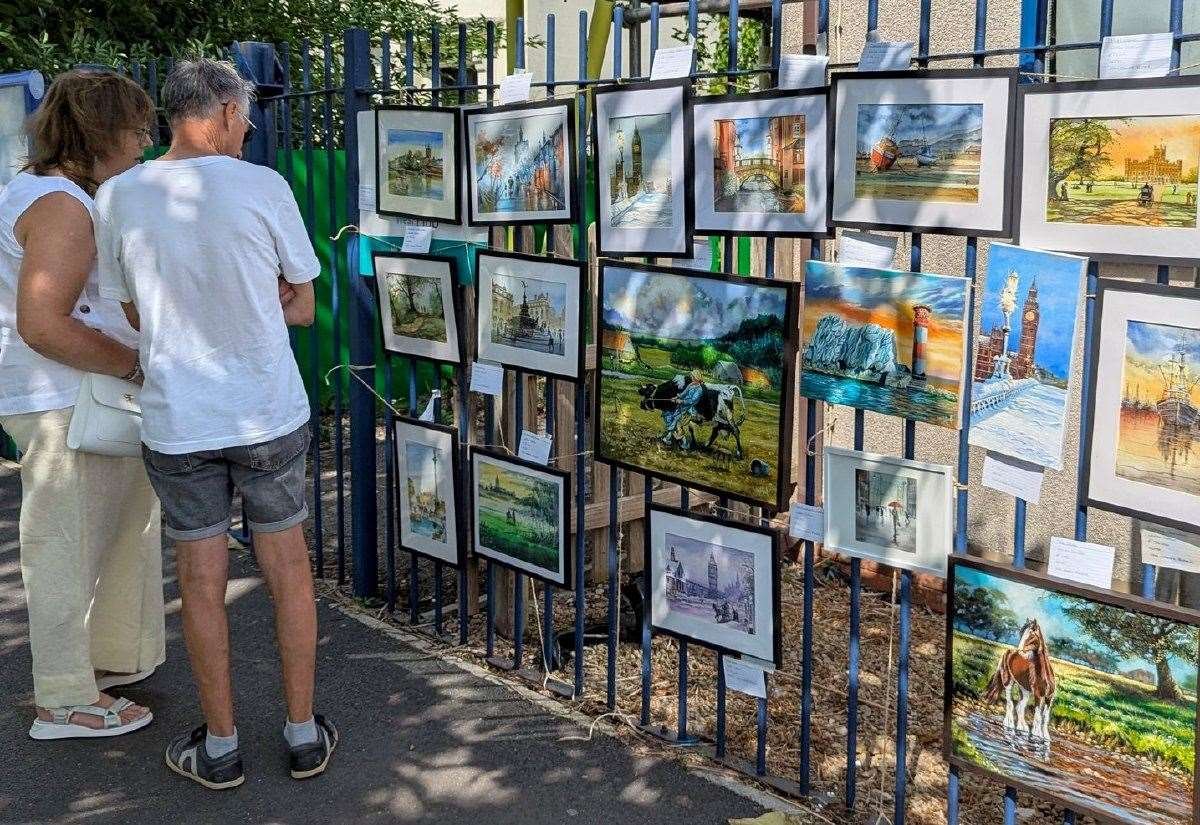Using mohair wool, Maria begins by embroidering her images, keeping things small scale as this allows her to include more colours and create a “high-res” look. When the embroidered image is complete, Maria then brushes the surface, releasing the very long fibres that come with mohair to create the striking blurred appearance. The technique is particularly effective when it comes to her pieces depicting dogs in the midst of fight (or play), giving the scenes a sense of movement and chaos. Interestingly, Maria found that brushing the image made it more precise, and easier to decipher rather than the almost pixelated un-brushed embroidery. “Perhaps it’s because the eye tries to correct the imprecision automatically,” she says.
A certain conflict lies at the heart of Maria’s works – while they’re made with traditional techniques, they recreate completely random, AI-generated imagery that Maria has amassed over time. “I constantly collect images in an unconscious and directionless manner,” she explains. She sees a certain “magic” in the way certain images will jump out to her, and reveal something important in her life, something she may have been ignoring, or not quite understood yet. “It’s like dreaming,” she says.
Once Maria has loosely created a few pieces, she will start bringing them together to try to decode a theme or thread running throughout. When preparing for her recent exhibition at Galerie Chloé Salgado in Paris, she realised many of the motifs included animations or plants, all with a strong “anthropomorphic aspect” to them. One plant that Maria has recreated is the snapdragon, though rather in its luscious full bloom, the artist has shown it once all its leaves and petals have fallen off. This reveals the part that holds the seeds, which has a disconcerting resemblance to a screaming human skull, an image that stands in almost comical contradiction with the fluffy materials used in its creation.
Since the exhibition, Maria’s works have blown up online – especially on Instagram. “I wish someone could explain the algorithm to me so I understand how this came about!” she says. “I can’t speak for other people, but perhaps the softness of the works is appealing, and the fact that many are at first confused by the texture of the pieces.” It’s true, the impulse to reach out and touch Maria’s works is pretty strong; it’s safe to say that any ‘Please do not touch’ signs would be pretty hard to adhere to.






